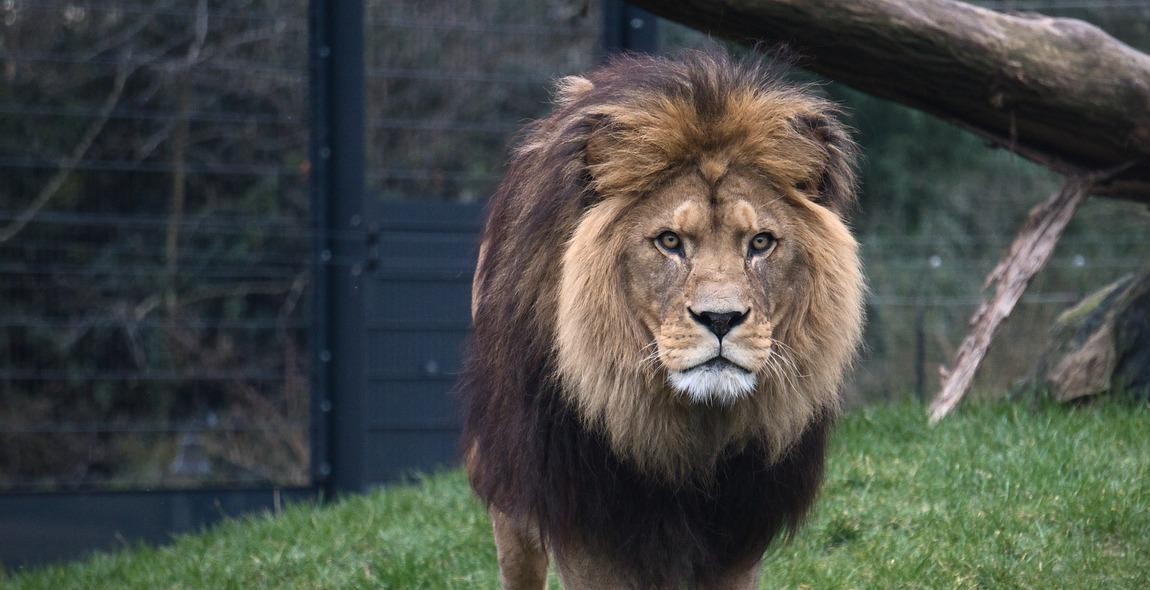How to Create a DIY Outdoor Cat Enclosure
As a cat owner, you want to provide your furry friend with the best possible living environment. While keeping your cat indoors is the safest option, outdoor cats also need a space to play and explore. That’s where an outdoor cat enclosure comes in.
Why Build an Outdoor Cat Enclosure?
There are several benefits to building an outdoor cat enclosure:
- Safe outdoor space: An outdoor enclosure provides a safe space for your cat to enjoy the outdoors without the dangers of cars, predators, or other outdoor hazards.
- Exercise and stimulation: Cats are natural climbers and explorers, and an outdoor enclosure provides them with the opportunity to climb, play, and explore their surroundings.
- Reduced stress: Outdoor cats can be stressed by the presence of other cats or animals in their territory. An outdoor enclosure allows your cat to have their own space without feeling threatened.
- Improved behavior: Cats that have access to outdoor spaces are generally happier and better-behaved than those that are confined indoors all the time.
Building a DIY outdoor cat enclosure is an affordable and rewarding project that can enhance your cat’s quality of life. In this article, we’ll guide you through the steps to create a safe and comfortable outdoor space for your furry friend.

Step 1: Planning
Before you start building your DIY outdoor cat enclosure, it’s important to plan out the project thoroughly. This will help ensure that you create a safe and comfortable space for your furry friend to enjoy. Here are some key factors to consider during the planning phase:
Choosing the Right Location
When choosing a location for your outdoor cat enclosure, you’ll want to consider a few things. First, you’ll want to make sure it’s in an area that’s easily accessible for you and your cat. You’ll also want to choose a spot that’s safe and secure, away from busy roads or other hazards that could pose a danger to your cat.
Additionally, you’ll want to think about the amount of sunlight and shade the area gets. Cats love basking in the sun, but they also need a shady spot to cool off when it gets too hot. Consider the position of the enclosure in relation to the sun’s path throughout the day to ensure your cat has access to both sun and shade.
Determining the Size of Your Enclosure
The size of your cat enclosure will depend on a few factors, including the size of your cat and how much space you have available. As a general rule, your cat should have enough room to move around comfortably, climb, and play. A good starting point is a minimum of 4 feet by 4 feet, but you can adjust the size up or down depending on your specific needs.
Deciding on the Type of Enclosure
There are several types of outdoor cat enclosures to choose from, including free-standing enclosures, enclosures that attach to your home, and enclosures that are built on top of an existing structure like a deck or patio. Consider the pros and cons of each type of enclosure, as well as your budget and DIY skills, when deciding which option is right for you.
By carefully planning out your outdoor cat enclosure project, you can create a safe and enjoyable space for your cat to explore and play in. The next steps will cover the materials and tools you’ll need to get started.

Step 2: Materials and Tools
Before you start building your DIY outdoor cat enclosure, you will need to gather all the necessary materials and tools. Here is a list of what you will need:
Materials Needed
- Pressure-treated lumber
- Wire mesh
- Wood screws
- Corner brackets
- Door hinges and latch
- Roofing material (optional)
- Concrete blocks or pavers (optional)
- Outdoor paint or stain (optional)
Tools Needed
- Power drill
- Screwdriver
- Measuring tape
- Saw
- Staple gun
- Wire cutters
- Paintbrush or roller
When selecting your materials, make sure to choose pressure-treated lumber to prevent rot and decay. The wire mesh should be durable and strong enough to withstand your cat’s claws. You may also want to consider roofing material if you live in an area with frequent rain or snow. Additionally, you can use concrete blocks or pavers to create a sturdy foundation for your enclosure.
Tools are just as important as materials when building your DIY outdoor cat enclosure. A power drill and screwdriver will be essential for assembling the enclosure, while a measuring tape and saw will help you make precise cuts and measurements. A staple gun and wire cutters will be necessary for attaching the wire mesh, and a paintbrush or roller will come in handy if you choose to paint or stain your enclosure.
| Materials | Tools |
|---|---|
| Pressure-treated lumber | Power drill |
| Wire mesh | Screwdriver |
| Wood screws | Measuring tape |
| Corner brackets | Saw |
| Door hinges and latch | Staple gun |
| Roofing material (optional) | Wire cutters |
| Concrete blocks or pavers (optional) | Paintbrush or roller |
| Outdoor paint or stain (optional) |
By gathering all the necessary materials and tools before you start building, you can save time and ensure that your DIY outdoor cat enclosure is built correctly and safely.
Step 3: Building the Enclosure
Now that you have prepared the site and gathered the necessary materials, it’s time to start building the enclosure. This section will guide you through the process of building a sturdy and secure outdoor cat enclosure.
Building the Frame
The first step in building the enclosure is to construct the frame. Use the 2×4 lumber to create a rectangular frame that matches the dimensions of your enclosure. Ensure that the corners are square and use galvanized screws to secure the frame together.
Adding the Fencing
Once you have built the frame, it’s time to add the fencing. Cut the wire mesh to fit the dimensions of the frame and attach it to the frame using a staple gun or galvanized screws. Make sure to secure the wire mesh tightly to prevent any gaps or holes that could allow your cat to escape.
Creating a Roof
The next step is to create a roof for the enclosure. Use the same 2×4 lumber to create a roof frame that matches the dimensions of the enclosure. Attach the roof frame to the top of the enclosure using galvanized screws. Once the frame is secure, add the roofing material of your choice. You can use corrugated plastic, metal roofing, or even shade cloth, depending on your preference.
Adding a Door
The final step is to add a door to the enclosure. Cut a hole in the wire mesh and attach a door frame using galvanized screws. You can use a pre-made screen door or create your own using 2×2 lumber and wire mesh. Make sure the door is secure and has a latch to keep your cat safely inside.
Conclusion
Building an outdoor cat enclosure may seem like a daunting task, but with the right materials and a little bit of know-how, it can be a fun and rewarding project. By following these steps, you can create a safe and secure outdoor space for your cat to enjoy the great outdoors while staying protected from potential dangers.
Step 4: Adding Accessories
Now that you have built the basic structure of your DIY outdoor cat enclosure, it’s time to add some accessories that will make it more comfortable and enjoyable for your feline friend.
Adding a Litter Box
One of the most important accessories to add to your outdoor cat enclosure is a litter box. You can either place the litter box inside the enclosure or outside it, depending on your preference. If you choose to keep it inside, make sure to place it in a corner where your cat can have some privacy. If you keep it outside, make sure to protect it from rain and other elements. You can use a plastic storage container with a lid as a litter box, or you can buy a specially designed outdoor litter box.
Providing Shade and Shelter
Another important accessory to add to your outdoor cat enclosure is some form of shade and shelter. Cats love to bask in the sun, but they also need a cool and shaded area where they can rest. You can add a canopy or awning to provide shade, or you can place a cat house or igloo inside the enclosure where your cat can retreat when it’s too hot or cold outside.
Adding Toys and Scratching Posts
Cats love to play and scratch, so it’s important to provide them with some toys and scratching posts inside the enclosure. You can hang some cat toys from the ceiling or walls, or you can place a scratching post or two inside. Make sure to choose toys that are safe for outdoor use and that can withstand the elements.
| Outdoor Cat Enclosure Accessories Checklist: |
|---|
| Litter box |
| Canopy or awning |
| Cat house or igloo |
| Cat toys |
| Scratching posts |
By adding these accessories to your DIY outdoor cat enclosure, you can create a safe and comfortable space where your cat can enjoy the great outdoors while still being protected from harm.

Conclusion
Creating a DIY outdoor cat enclosure is a great way to provide your feline friends with a safe and secure outdoor space. Not only does it give them the opportunity to enjoy the fresh air and sunshine, but it also helps to keep them protected from predators and other outdoor dangers.
When building your cat enclosure, it’s important to keep in mind the specific needs and preferences of your cats. Consider the size of the enclosure, the materials used, and the placement of toys and other items to create a comfortable and stimulating environment for your pets.
Remember to also take into account any local regulations or zoning laws that may apply to building an outdoor cat enclosure in your area. By doing your research and following the proper guidelines, you can ensure that your DIY project is both safe and legal.
Overall, creating a DIY outdoor cat enclosure can be a fun and rewarding project for any cat lover. With a little bit of planning and creativity, you can provide your furry friends with a space they’ll love and enjoy for years to come.
Additional Resources:
- How to Build a Cat Enclosure
- How to Build a Cat Enclosure: 15 Steps (with Pictures)
- How to Build a Feline-Friendly Fence
If you have any questions or comments about creating a DIY outdoor cat enclosure, feel free to share them in the comments below!
